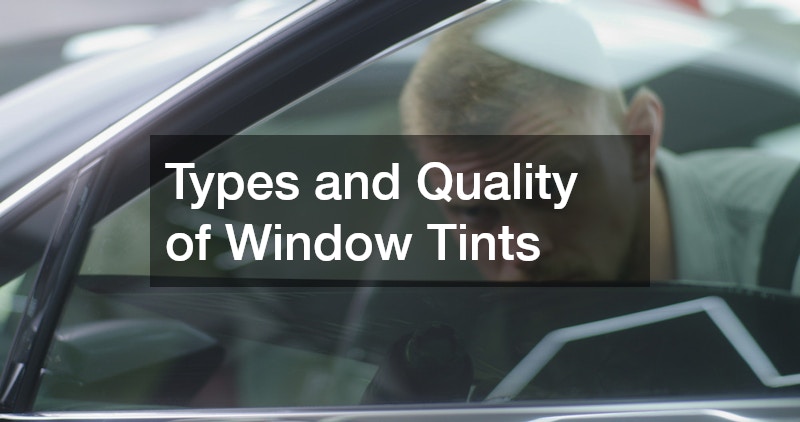In this article, we’ll explore how car window tinting can effectively safeguard your vehicle and its interior. From reducing glare and UV exposure to enhancing privacy and security, window tinting offers multiple benefits. We’ll address some of the most common questions to help you understand why tinting is a worthwhile investment for your vehicle.
The Benefits of Car Window Tinting
Protection Against UV Rays
One of the most significant advantages of car window tinting is its ability to block harmful ultraviolet rays. Many high-quality tints can block up to 99% of UV rays, which helps prevent the interior materials like leather, vinyl, and plastic from fading and cracking. This not only extends the life of your car’s interior but can also contribute to better skin protection for passengers over time.
Ultraviolet rays are known to accelerate the aging of materials within your car’s interior. This damage not only detracts from the vehicle’s aesthetic appeal but can also lower its resale value. By integrating window tints, car owners can sustain the original condition of their vehicle’s interior by minimizing UV exposure.
Additionally, reducing UV exposure can make a significant difference in skin health for frequent commuters. Regular exposure to UV rays can increase the risk of skin cancer and other related health issues. Window tinting, therefore, offers an added health benefit for long journeys under the sun.
Reduction in Heat and Glare
Window tinting can significantly reduce the heat inside your vehicle. Tints can help maintain a cooler interior temperature by minimizing the heat from direct sunlight, particularly during hot summer months. This not only makes your car’s environment more comfortable but can also result in a more efficient air conditioning system as it doesn’t need to work as hard to cool the interior.
Tackling glare is another important advantage of car window tinting. The reduction in glare from the sun or headlights at night ensures a safer driving experience by enhancing visibility. Anti-glare properties also reduce eye strain, making for a more pleasant journey for the driver and passengers alike.
Moreover, by maintaining a cooler car interior, you reduce the risk of heat-related damage over time. Plastics and materials used inside the car can warp and degrade quicker with sustained exposure to high temperatures. Thus, tinting your windows plays a crucial role in preserving the car’s interior mechanics and structure.
How Window Tinting Improves Car Security
Enhanced Privacy
Privacy is a growing concern for many car owners, and window tinting provides an effective solution. By making the interior less visible to onlookers, tinting acts as a deterrent to potential thieves looking for valuables inside your car. This layer of obscurity has been found to reduce car break-ins in numerous reports on vehicle safety.
Many potential thieves are opportunists who quickly assess the visibility of valuables before committing a crime. Tinted windows make it difficult for prying eyes to see inside, reducing the temptation. Increasing cabin privacy is, therefore, a practical step many car owners take to secure their vehicles better.
Shatter-Resistance
Another vital security aspect of window tinting is its contribution to glass shatter-resistance. In the event of an accident or a break-in attempt, windows with quality tints can hold shattered glass together, reducing the chance of injury from flying glass shards. This helps protect the vehicle’s occupants and reinforces the car’s structural integrity during impacts.
Shatter-resistant properties protect not only people inside the vehicle but also the interior details and equipment. By holding glass together, tints prevent the outside elements from further damaging the interior after a window break. As a result, this can save car owners a significant repair cost following such incidents.
Factors to Be Considered When Choosing Window Tint
Legal Regulations and Permits
Before having your car windows tinted, it is crucial to be aware of the legal regulations in your area. Various states and countries have specific laws governing levels of tint darkness, and non-compliance can lead to fines and mandatory removal. Knowing the legal darkest tint you can apply ensures that you remain compliant while enjoying the benefits of window tinting.
In many places, the law sets different tint percentages for front, side, and rear vehicle windows. Permits may also be needed, especially for medical exemptions allowing darker tints. Compliance involves understanding these legal ranges and ensuring your chosen tint type is both legal and effective.
Types and Quality of Window Tints
Car owners can choose from several types of window tints, each offering different benefits at varying price points. Popular options include dyed, metalized, hybrid, and ceramic tints, all providing varying levels of protection, heat reduction, and clarity. Understanding these differences can help you choose a tint that aligns with your desired balance of performance and budget.
Quality should be a primary consideration when selecting a tint. Lower-quality tints may not provide sufficient UV blocking, could bubble over time, and may fail to offer the thermal protection desired. Investing in high-quality tints often results in a longer-lasting, more aesthetically pleasing finish.
Window tinting is more than just a stylistic upgrade; it plays a crucial role in protecting your vehicle and enhancing its value. By understanding the benefits and considerations involved, you can make an informed decision to invest in quality window tinting for your car. From enhancing security to safeguarding against UV damage, the wide range of advantages confirms that tinting is a practical and valuable addition to any vehicle.


